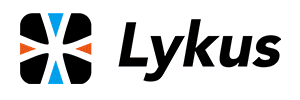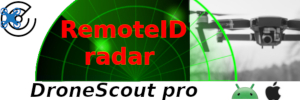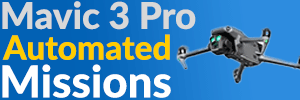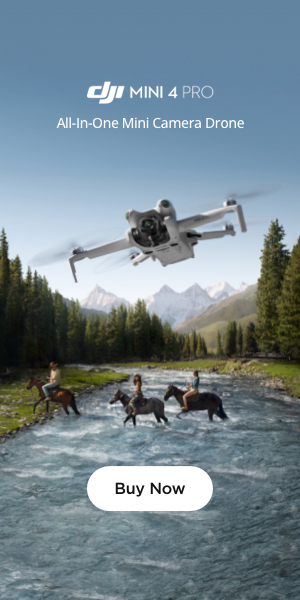You are using an out of date browser. It may not display this or other websites correctly.
You should upgrade or use an alternative browser.
You should upgrade or use an alternative browser.
USB a to USB B or C short connector?
- Thread starter dlrdmd
- Start date
The USB C is the connector I use for attaching devices. However, I still need the USB micro c on the side for charging the RC. And that’s the one that drives me nuts (I start rehab next week) for not being the correct form.
See previous post with pix.
See previous post with pix.
FoxhallGH
Well-Known Member
Exactly the situation I have for connecting my Android phone. I use a short USB-A to USB-C cable from the underside port on the controller, and have a 'micro-USB B' NetDot stub permanantly connected to the side port of the controller ... I just wave the body of the NetDot cable near the stub on the controller, it snap-connects and starts charging. When it comes time to disconnect, just gently twist the head of the NetDot cable, and it comes away, leaving the stub behind for next time (If you pull it straight out, it will pull the stub out of the socket and you then have to plug it back in again and put your socket at risk).


Former Member
Well-Known Member
(If you pull it straight out, it will pull the stub out of the socket and you then have to plug it back in again and put your socket at risk).
Mine plug stays in no matter how hard I pull on the cable. The friction between the plug on the controller connector is greater than the friction between the cable and the plug. Straight, twist, sideways, the plug never comes out.
Balko
Well-Known Member
- Joined
- May 8, 2017
- Messages
- 131
- Reactions
- 34
@dlrdmd check out this magnetic cable from Amazon. I have a few of them and they work great for charging, but not for data. You just plug the end of the cable into your controller and leave it there. When you want to charge, you just put the cable near the plug and it pulls the cable right into the plug magnetically from around an inch away. One caveat, once you put the plug into the controller, try not to take it out too often. Its a PITA to get out! lol But it will save your Micro USB port.
https://www.amazon.com/gp/product/B06XVRBTXK/ref=ppx_yo_dt_b_asin_title_o05__o00_s00?ie=UTF8&psc=1
Nice product....thanks for the tip!
Former Member
Well-Known Member
Balko
Well-Known Member
- Joined
- May 8, 2017
- Messages
- 131
- Reactions
- 34
@dlrdmd check out this magnetic cable from Amazon. I have a few of them and they work great for charging, but not for data. You just plug the end of the cable into your controller and leave it there. When you want to charge, you just put the cable near the plug and it pulls the cable right into the plug magnetically from around an inch away. One caveat, once you put the plug into the controller, try not to take it out too often. Its a PITA to get out! lol But it will save your Micro USB port.
https://www.amazon.com/gp/product/B06XVRBTXK/ref=ppx_yo_dt_b_asin_title_o05__o00_s00?ie=UTF8&psc=1
I checked out the Amazon link...now if the small “magnetic” end is supposed to just be attached most of the time on the controllers port, do we, or can we still use the original cable of the controller...and would it be compatible?
In modern devices, usb end connectors, are working both ways, so they are 'A' and 'B' at the same time.No - it's not a bad decision - unfortunately it's the right & correct decision! The USB standard has an 'A' and a 'B' end type of connector. An 'A' end is the device (e.g. a PC), that's providing the power &/or data to another device (e.g. a mobile phone), which is designated the 'B' end. In most cases, the 'A' end of a connecting cable is predominantly a [large] USB-A type plug connector, and the 'B' end is the smaller USB / mini-USB/ micro-USB type plug designed for; inkjet printers, mobile phones, dash-cam's etc.
In the case of the DJI Mavic Pro & Pro 2, the controller is acting as the 'A' party in the network, connecting through to the mobile phone / tablet which is the 'B' device.
The controller has two 'A' type USB connectors ... the micro-USB A on the side, and the USB-A [standard] port on the base. DJI have been 100% correct in engineering the controller this way - however, that doesn't stop it being a right PITA when it comes to using that micro-USB A port as a charging port, when suddenly the controller goes from being an 'A' device, to a 'B' device!
View attachment 60596
If you have a look around, you'll find that it's almost impossible to find a USB cable that has a USB-A plug on one end, and a 'micro-USB A' on the other. That would be the ideal charging cable for the Mavic controller - but is by description, completely non-standard. The alternatives have been discussed in this thread, and my personal favourite is to ditch the proprietary 'flat' cable that DJI supply to connect the controller micro-USB port to the mobile device, and use a USB-A cable from the bottom port to my (USB-C) Android phone. I then use a micro-USB B NetDot tip - carefully inserted the right-way-round - in the side port, and leave the tip there permanantly, only using that port for charging.
View attachment 60597
For example, if we connect a smartphone with a pc, data can flow from pc or from smartphone, at the same time.
I cannot remember any other device I have used (and they are a lot) with that connector (micro A). Are their engineering team wrong with not using it?
It's obvious that the connector used by DJI, is problematic, and designing department should fix it, in Mavic 2 series at least (maybe in Mavic platinum).
It's a WRONG decision to me, and it's not the only one.
Mine plug stays in no matter how hard I pull on the cable. The friction between the plug on the controller connector is greater than the friction between the cable and the plug. Straight, twist, sideways, the plug never comes out.
Reading the whole thread I saw that there are some users with same problem with me.
Magnetic end doesn't fit firmly, and comes out easily.
And I'm sure, I ordered NetDot version 3 cables.
Something is wrong with their versions.
PS. None of the magnetic cables I've used til now, is capable of reliable data transfer. Only charging.
Former Member
Well-Known Member
Reading the whole thread I saw that there are some users with same problem with me.
Magnetic end doesn't fit firmly, and comes out easily.
And I'm sure, I ordered NetDot version 3 cables.
Something is wrong with their versions.
PS. None of the magnetic cables I've used til now, is capable of reliable data transfer. Only charging.
I dont recommend it for data, just for charging.
I know, some guy (not you) told something about data transfer.I dont recommend it for data, just for charging.
Former Member
Well-Known Member
I know, some guy (not you) told something about data transfer.
You can use the reversible cables for data but not the magnetic.
You can use the reversible cables for data but not the magnetic.
Rob I used my magnetic cable (the ones you recommend) yesterday with DJI Assistant 2 to do my firmware update on my RC and had no problem with it.
Former Member
Well-Known Member
Rob I used my magnetic cable (the ones you recommend) yesterday with DJI Assistant 2 to do my firmware update on my RC and had no problem with it.
The problem with my magnetic ones is that sometimes they work for data, and sometimes they dont. Im glad you were able to use it for data. I just wouldnt rely on it as my only data cable. The reversible ones are dual purpose, for me at least.
FoxhallGH
Well-Known Member
Hi @Balko - If you are going to use the NetDot type mag' cables, then the idea is that you no longer use the side port of the controller to connect the controller to your phone/tablet. In other words - No - you no longer need that bespoke short cable that DJI supply for the side port. Just insert the NetDot micro-USB tip into the controller micro-USB socket - and leave it there. Then use a short (6") USB-A cable that has the correct end on it, from the USB port in the base of the controller, to your phone/tablet. This photo is my controller set up exactly that way, with the NetDot tip in the side port, and a USB-A to USB-C cable connecting my Android phone to the controller ... Works 100% ...I checked out the Amazon link...now if the small “magnetic” end is supposed to just be attached most of the time on the controllers port, do we, or can we still use the original cable of the controller...and would it be compatible?

Remember that if you do use a cable from the lower USB-A to connect your phone - you MUST have the standard DJI micro-USB A cable disconnected from the controller, otherwise Go 4 just won't connect (but leaving the NetDot tip in the controller doesn't do the same ...).
RobH2
Well-Known Member
I just want to report that I use a magnetic connector and it works perfectly. All that stays on the controller is a small button. It causes no interference or issues and the charge time seems to be as fast as normal. It's likely that I'll never have to insert or remove anything from my charge port again and it should have a long service life.
Item I purchased...
Item I purchased...
Last edited:
Regarding comparing dual purpose A B use of micro ports, the primary purpose of the side port is as an initiator (type A) with its use as a target or charge port secondary.
On the other hand, the primary purpose of the micro port on a mobile device is as a target (type B) with On The Go as an initiator being an exception to the rule.
Incidentally, the side port is used as type B not only for charging, but also to connect to a PC for firmware updates and download logs using Assistant. You can't use the bottom full sized A for either of these purposes.
You can connect a type B micro plug into a type A micro socket, but a type A plug cannot go into a B socket.
You would be really hard pressed to interchange full sized A and B. A as you know is rectangular, B is the shape of a house with a flat ridge on the roof.
USB C is androgynous. There is no "type A or B" designation for C.
On the other hand, the primary purpose of the micro port on a mobile device is as a target (type B) with On The Go as an initiator being an exception to the rule.
Incidentally, the side port is used as type B not only for charging, but also to connect to a PC for firmware updates and download logs using Assistant. You can't use the bottom full sized A for either of these purposes.
You can connect a type B micro plug into a type A micro socket, but a type A plug cannot go into a B socket.
You would be really hard pressed to interchange full sized A and B. A as you know is rectangular, B is the shape of a house with a flat ridge on the roof.
USB C is androgynous. There is no "type A or B" designation for C.
Balko
Well-Known Member
- Joined
- May 8, 2017
- Messages
- 131
- Reactions
- 34
Hi @Balko - If you are going to use the NetDot type mag' cables, then the idea is that you no longer use the side port of the controller to connect the controller to your phone/tablet. In other words - No - you no longer need that bespoke short cable that DJI supply for the side port. Just insert the NetDot micro-USB tip into the controller micro-USB socket - and leave it there. Then use a short (6") USB-A cable that has the correct end on it, from the USB port in the base of the controller, to your phone/tablet. This photo is my controller set up exactly that way, with the NetDot tip in the side port, and a USB-A to USB-C cable connecting my Android phone to the controller ... Works 100% ...
View attachment 60667
Remember that if you do use a cable from the lower USB-A to connect your phone - you MUST have the standard DJI micro-USB A cable disconnected from the controller, otherwise Go 4 just won't connect (but leaving the NetDot tip in the controller doesn't do the same ...).
Hi FoxhallGH.
I actually use the USB slot found underneath the controller to connect to my iPad using the tablet’s original Apple Lightning cable. I NEVER used the side slot and the short cable that was supplied with the DJI kit. Aside from the fact that I think it is too short to reach the lghtning slot of the iPad, I have read many negative feedbacks from forum members about the unreliable quality of these cables.
My real query was the Amazon link re magnetic tips that would be used to SAVE the charging slot from the side of the controller from deteriorating prematurely due to constant attaching and detaching of the charging cable from the charger. Many complained, that theirs got destroyed.
Anyway, thank you for dropping off a reply.
Last edited:
Similar threads
- Replies
- 2
- Views
- 1K
- Replies
- 6
- Views
- 984
- Replies
- 12
- Views
- 2K
DJI Drone Deals
New Threads
-
I want to know why my Mavic 2 battery suddenly goes from 70% to 0%.
- Started by jong in
- Replies: 0
-
Last Week's Most Popular Topics (December 6, 2025)
- Started by msinger
- Replies: 0
-
-
-
Where to buy recently released DJI drones from the US (updated daily)
- Started by msinger
- Replies: 3











